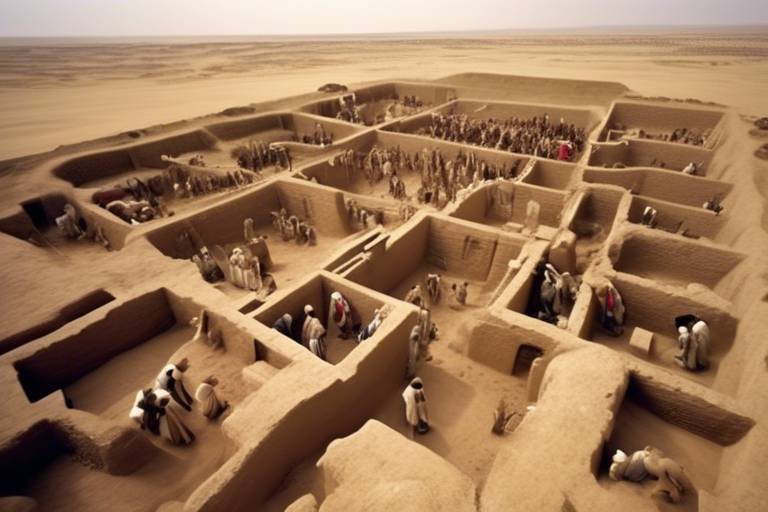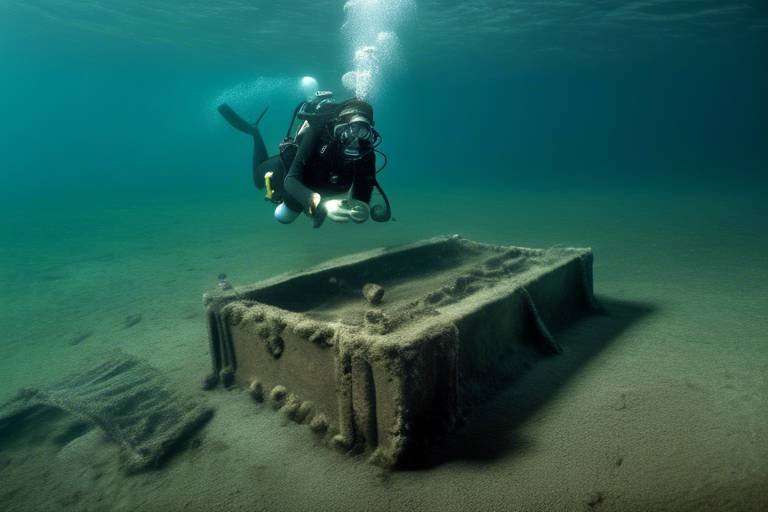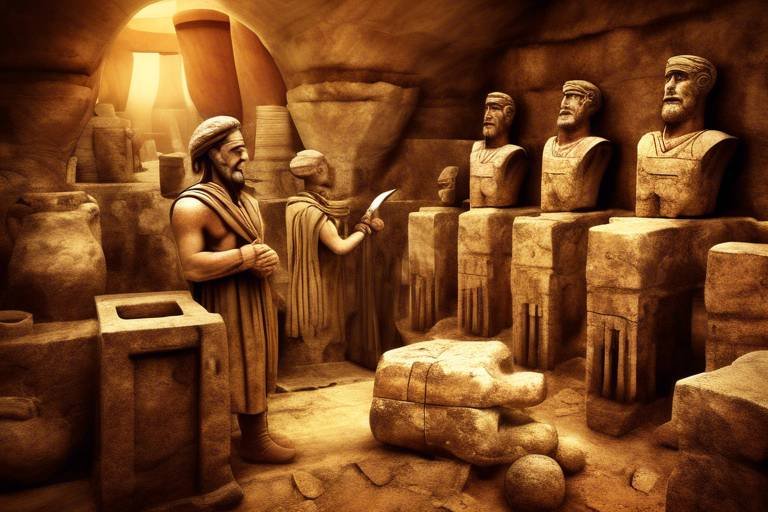Discoveries by Louis and Mary Leakey in Africa
The discoveries made by Louis and Mary Leakey in Africa stand as a testament to their pioneering work in the fields of archaeology and anthropology. With a passion for unraveling the mysteries of human evolution, this dynamic duo ventured into various regions of Africa, unearthing groundbreaking findings that continue to shape our understanding of the past.
One of the most renowned excavations conducted by the Leakeys took place at Olduvai Gorge in Tanzania. Here, they meticulously unearthed early human remains and stone tools, providing invaluable insights into the evolution of our species. Their discoveries at Olduvai Gorge revolutionized the way we perceive human origins and laid the foundation for further research in the field.
Another remarkable find by the Leakeys was the discovery of ancient hominin footprints at Laetoli in Tanzania. These well-preserved footprints offered a glimpse into the bipedal nature of early human ancestors, shedding light on their way of life and movement patterns. The Laetoli footprints remain a significant piece of evidence in the study of human evolution.
In their explorations in East Africa, the Leakeys also unearthed new hominin species such as Kenyanthropus platyops and various Australopithecus specimens. These discoveries added to the complexity and diversity of the human evolutionary tree, highlighting the rich tapestry of our ancestral heritage.
Delving into the realm of tool use and cultural evolution, the Leakeys' research unveiled the early practices of hominins in crafting tools and the development of cultural behaviors in prehistoric societies. Their findings underscored the importance of material culture in the evolutionary journey of humankind, showcasing the innovative nature of our ancestors.
The impact of Louis and Mary Leakey's discoveries reverberates through the field of paleoanthropology to this day. Their pioneering work has shaped our knowledge of human origins and continues to influence future research in the study of human evolution. The Leakeys' legacy remains a cornerstone in the quest to unravel the complexities of our past.
Despite their monumental contributions, the work of the Leakeys has not been without controversies and criticisms. Debates over interpretation, methodology, and the representation of their discoveries in the scientific community have sparked discussions within the field. However, their enduring legacy and profound impact on paleoanthropology cannot be overlooked.
Furthermore, the Leakeys' dedication to conservation and heritage preservation in Africa has been commendable. Their advocacy for the protection of archaeological sites and natural resources underscores the importance of safeguarding our shared heritage for future generations. The Leakeys' efforts in promoting conservation serve as a reminder of the need to preserve our past for the benefit of all.

Olduvai Gorge Excavations
The Olduvai Gorge excavations conducted by Louis and Mary Leakey in Tanzania stand as a pivotal moment in the field of archaeology and paleoanthropology. Through their meticulous work in this iconic location, the Leakeys unearthed a treasure trove of early human remains and stone tools that rewrote the narrative of human evolution. The layers of sediment at Olduvai Gorge revealed a timeline of human history, spanning millions of years and providing crucial insights into our ancestral past.
One of the most significant findings at Olduvai Gorge was the discovery of Homo habilis, an early human species known for its tool-making abilities. This groundbreaking revelation challenged existing beliefs about the cognitive capacities of our ancestors and highlighted the innovative nature of early hominins. The Leakeys' excavations not only uncovered physical evidence of ancient humans but also shed light on their social structures, behaviors, and adaptations to the environment.
Moreover, the stratigraphic sequence at Olduvai Gorge allowed researchers to piece together a timeline of human evolution, linking different hominin species and their technological advancements over time. The Leakeys' meticulous documentation of the excavations provided a detailed record of the archaeological finds, enabling future generations of scientists to build upon their work and deepen our understanding of human origins.
By meticulously documenting the geological layers and the artifacts found within them, the Leakeys revolutionized the study of human evolution and set a high standard for archaeological research. Their discoveries at Olduvai Gorge continue to inspire new generations of researchers to explore the depths of our past and unravel the mysteries of our shared heritage.

Laetoli Footprints Discovery
When it comes to the fascinating realm of archaeological discoveries, few findings are as captivating as the made by the pioneering duo Louis and Mary Leakey. These ancient footprints, preserved in volcanic ash at Laetoli in Tanzania, offer a remarkable glimpse into the past, providing invaluable insights into the behavior and locomotion of our early human ancestors.
The Laetoli footprints represent a pivotal moment in the study of human evolution, as they offer tangible evidence of bipedalism in hominins dating back millions of years. The Leakeys' meticulous excavation work uncovered a series of footprints believed to have been left by Australopithecus afarensis individuals, showcasing their ability to walk upright—a defining characteristic that sets humans apart from other primates.
Imagine standing in the footsteps of our distant relatives, tracing the path they once walked in a distant era. These prehistoric footprints not only shed light on the physical capabilities of early hominins but also provide clues about their social dynamics, daily activities, and interactions with the environment.
Through the analysis of these ancient footprints, scientists have been able to reconstruct the movements and behaviors of our early ancestors, painting a vivid picture of life in a bygone era. The precision and detail of the footprints offer a window into a world long extinct, yet remarkably preserved in the hardened ash of time.
The stands as a testament to the enduring legacy of the Leakeys, whose groundbreaking work continues to shape our understanding of human origins and evolution. These footprints not only mark a significant milestone in the field of paleoanthropology but also serve as a tangible connection to our shared past, bridging the gap between ancient history and modern science.

Kenyanthropus and Australopithecus Finds
The discoveries of Kenyanthropus platyops and various Australopithecus specimens in East Africa by Louis and Mary Leakey have significantly contributed to our understanding of human evolution. Kenyanthropus platyops, a hominin species identified by the Leakeys in Kenya, added a new branch to the human evolutionary tree. The findings of Australopithecus specimens, such as Australopithecus afarensis, provided valuable insights into the morphology and behavior of early human ancestors.
Through meticulous excavations and careful analysis of fossils and artifacts, the Leakeys uncovered a diverse range of hominin species, showcasing the complexity and richness of human evolutionary history. Their discoveries not only expanded the known diversity of early human relatives but also highlighted the evolutionary relationships between different species, shedding light on the adaptive strategies and ecological contexts of our ancestors.
By studying the anatomical features, tool use patterns, and environmental contexts of Kenyanthropus and Australopithecus specimens, the Leakeys were able to reconstruct the lifestyles and behaviors of these ancient hominins. The fossil record left behind by these early humans offers a glimpse into the evolutionary processes that shaped our species, illustrating the gradual development of bipedalism, tool use, and social interactions over millions of years.

Tool Use and Cultural Evolution
When delving into the fascinating realm of human evolution and cultural history, one cannot overlook the pivotal research conducted by the esteemed duo, Louis and Mary Leakey. Their groundbreaking discoveries have not only reshaped our understanding of the past but have also paved the way for future explorations in the field of anthropology.
One of the most significant contributions of the Leakeys lies in their exploration of tool use among early hominins and the subsequent development of cultural behaviors in ancient societies. By meticulously studying the artifacts left behind by our ancestors, they uncovered a rich tapestry of technological advancements and social practices that played a crucial role in shaping human evolution.
Through their meticulous excavations and detailed analysis, the Leakeys provided invaluable insights into the ways in which early humans interacted with their environment and each other. The tools they unearthed not only served practical purposes but also hinted at the emergence of complex social structures and symbolic communication within prehistoric communities.
Moreover, the Leakeys' research shed light on the evolutionary significance of tool use, showcasing how our ancestors' ability to manipulate objects and craft tools marked a pivotal step in our cognitive development. This cognitive leap not only enabled early humans to adapt to diverse environments but also laid the foundation for the cultural evolution that would define our species.
By studying the evolution of tool use and cultural practices, the Leakeys provided a window into the past, allowing us to glimpse the intricate web of connections that link us to our ancient forebears. Their work serves as a testament to the enduring legacy of human ingenuity and innovation, highlighting the transformative power of tools in shaping the course of human history.

Impact on Paleoanthropology
Louis and Mary Leakey's groundbreaking discoveries have had a profound impact on the field of paleoanthropology, reshaping our understanding of human origins and evolution. By unearthing early human remains and stone tools at Olduvai Gorge in Tanzania, the Leakeys provided crucial evidence that challenged existing theories and paved the way for new interpretations of human evolution.
Their identification of new hominin species, such as Kenyanthropus platyops and various Australopithecus specimens in East Africa, expanded the diversity of the human evolutionary tree, offering insights into the complex web of human ancestors and their relationships.
Moreover, the Leakeys' research on early tool use by hominins highlighted the significance of material culture in human evolution, demonstrating how technological advancements and cultural behaviors played a pivotal role in shaping prehistoric societies.
By emphasizing the interconnectedness of biological and cultural evolution, Louis and Mary Leakey's work has influenced future research directions in paleoanthropology, inspiring scientists to explore new avenues of inquiry and challenge conventional wisdom in the study of human origins.
Their legacy continues to inspire generations of researchers to delve deeper into the mysteries of human evolution, pushing the boundaries of knowledge and fostering a greater appreciation for the rich tapestry of our shared past.

Legacy of the Leakey Family
The legacy of the Leakey family in the field of paleoanthropology is nothing short of legendary. Louis and Mary Leakey's groundbreaking discoveries have paved the way for a deeper understanding of human evolution and cultural history in Africa. Their tireless dedication to uncovering the secrets of our ancient past has left an indelible mark on the scientific community and continues to inspire generations of researchers.
One of the most remarkable aspects of the Leakey family's legacy is the continuation of their work through their children and grandchildren. Richard, Jonathan, and Meave Leakey have all made significant contributions to the field, carrying on the tradition of exploration and discovery that their parents began. Their research has further expanded our knowledge of human origins and added new branches to the evolutionary tree.
Through their expeditions and excavations, the Leakeys have not only unearthed fossils and artifacts but also raised awareness about the importance of conservation and heritage preservation. Their efforts to protect archaeological sites and natural resources in Africa have had a lasting impact, ensuring that future generations will have the opportunity to study and appreciate our shared human history.
The Leakey family's legacy serves as a testament to the power of curiosity, perseverance, and passion in the pursuit of knowledge. Their work continues to inspire scientists and enthusiasts alike to delve into the mysteries of our past, sparking new discoveries and shaping our understanding of what it means to be human.

Controversies and Criticisms
When it comes to the groundbreaking work of Louis and Mary Leakey in the field of paleoanthropology, controversies and criticisms are inevitable. Their discoveries have not been immune to scrutiny, with debates arising over various aspects of their research and findings. One of the main points of contention revolves around the interpretation of the evidence unearthed by the Leakeys. Critics often question the conclusions drawn from the archaeological remains and challenge the validity of the inferences made about early human ancestors based on limited fossil evidence.
Methodology is another area that has sparked controversy in relation to the Leakeys' work. Some researchers have raised concerns about the excavation techniques used by the Leakeys, suggesting that certain methods may have influenced the integrity of the findings. The meticulous process of uncovering and documenting ancient artifacts and fossils is a delicate task that requires precision and adherence to scientific standards, leading to debates about the accuracy and reliability of the Leakeys' methods.
Furthermore, the representation of the Leakeys' discoveries in the scientific community has been a subject of criticism. The way in which their findings are communicated and disseminated can impact the broader understanding of human evolution. Questions have been raised about the transparency of the Leakeys' research practices and the extent to which their work aligns with the current scientific consensus in the field of paleoanthropology.
Despite the controversies and criticisms surrounding their work, the Leakeys' contributions to the study of human evolution remain significant. Their discoveries have laid the foundation for ongoing research in paleoanthropology and continue to shape our understanding of our ancient origins. By addressing the challenges and engaging in critical discourse, the legacy of Louis and Mary Leakey endures as a testament to the complexities of unraveling the mysteries of human evolution.

Conservation and Heritage Preservation
Conservation and heritage preservation have been paramount in the work of Louis and Mary Leakey, who recognized the importance of safeguarding archaeological sites and natural resources in Africa for future generations. Their efforts extended beyond scientific discovery to advocating for the protection of cultural heritage and the environment.
The Leakeys' commitment to conservation stemmed from their deep respect for the rich history and biodiversity of Africa. By promoting sustainable practices and raising awareness about the significance of preserving heritage sites, they aimed to ensure that these invaluable resources would be available for study and enjoyment by coming generations.
Through their work, the Leakeys emphasized the need for responsible tourism and development in areas of archaeological importance. They collaborated with local communities and authorities to establish guidelines for the sustainable management of heritage sites, balancing the preservation of history with the needs of contemporary society.
Furthermore, the Leakeys actively supported initiatives that aimed to combat illegal excavation, looting, and trafficking of cultural artifacts. By engaging in educational programs and outreach efforts, they sought to instill a sense of pride and ownership among local populations, fostering a collective responsibility for protecting Africa's rich cultural heritage.
In addition to their scientific contributions, the Leakeys' legacy in conservation and heritage preservation serves as a reminder of the interconnectedness between human history and the natural world. By safeguarding archaeological sites and promoting environmental stewardship, they have left a lasting impact on the preservation of Africa's cultural legacy for generations to come.
Frequently Asked Questions
- 1. What were some of the key discoveries made by Louis and Mary Leakey?
The Leakeys made groundbreaking discoveries in Africa, including early human remains, stone tools, ancient hominin footprints, and new hominin species like Kenyanthropus platyops and various Australopithecus specimens.
- 2. How did the Leakeys contribute to our understanding of human evolution?
By conducting significant excavations at sites like Olduvai Gorge and Laetoli, the Leakeys provided crucial evidence of bipedalism in early human ancestors, the development of tool use, and the diversity of the human evolutionary tree.
- 3. What is the legacy of the Leakey family in paleoanthropology?
The Leakey family's legacy extends beyond Louis and Mary, with their children and grandchildren continuing the tradition of groundbreaking research in Africa, shaping our knowledge of human origins and influencing future studies in human evolution.
- 4. What controversies and criticisms surround the work of the Leakeys?
Some controversies include debates over interpretation, methodology, and the representation of their discoveries in the scientific community, highlighting the ongoing discussions and challenges within the field of paleoanthropology.
- 5. How did the Leakeys promote conservation and heritage preservation in Africa?
Through their efforts, the Leakeys advocated for the protection of archaeological sites and natural resources, emphasizing the importance of preserving Africa's cultural heritage for future generations and promoting sustainable conservation practices.



















